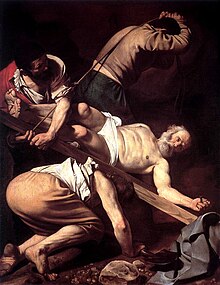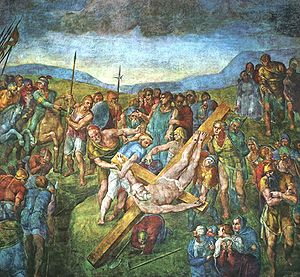- Get link
- X
- Other Apps
- Get link
- X
- Other Apps
Foxe's Book of Martyrs. According to this summary from Christian Book Summaries,
Writing in the mid-1500s, John Foxe was living in the midst of intense religious persecution at the hands of the dominant Roman Catholic Church. In graphic detail, he offers accounts of Christians being martyred for their belief in Jesus Christ, describing how God gave them extraordinary courage and stamina to endure unthinkable torture.
From the same link, the book's purpose was fourfold:
Little is known about Mark except what is written in the New Testament about him. After Paul's mention of him in 2 Timothy 4:11, he disappears from view. Tradition says he was dragged to pieces when he spoke out against a solemn ceremony for their idol Serapis.
The only account we have of the martyrdom of Apostle Peter is from the early Christian writer Hegesippus. His account includes a miraculous appearance by Christ. When Peter was old (John 21:18), Nero planned to put him to death. When the disciples heard of this, they begged Peter to flee the city [said to be Rome], which he did. But when he got to the city gate, he saw Christ walking towards him. Peter fell to his knees and said "Lord, where are you going?" Christ answered, "I've come to be crucified again." By this, Peer understood it was his time to suffer the death of Jesus which would glorify God. (John 21:19). So he went back to the city. After being captured and taken to his place of martyrdom, he requested that he be crucified in an upside-down position because he did not consider himself worthy to be crucified in the same position as his Lord.
Writing in the mid-1500s, John Foxe was living in the midst of intense religious persecution at the hands of the dominant Roman Catholic Church. In graphic detail, he offers accounts of Christians being martyred for their belief in Jesus Christ, describing how God gave them extraordinary courage and stamina to endure unthinkable torture.
From the same link, the book's purpose was fourfold:
- Showcase the courage of true believers who have willingly taken a stand for Jesus Christ throughout the ages, even if it meant death,
- Demonstrate the grace of God in the lives of those martyred for their faith,
- Expose the ruthlessness of religious and political leaders as they sought to suppress those with differing beliefs,
- Celebrate the courage of those who risked their lives to translate the Bible into the common language of the people.
Mark
Little is known about Mark except what is written in the New Testament about him. After Paul's mention of him in 2 Timothy 4:11, he disappears from view. Tradition says he was dragged to pieces when he spoke out against a solemn ceremony for their idol Serapis.
The martyrdom of Saint Mark.
(Musée Condé, Chantilly).
Peter
The only account we have of the martyrdom of Apostle Peter is from the early Christian writer Hegesippus. His account includes a miraculous appearance by Christ. When Peter was old (John 21:18), Nero planned to put him to death. When the disciples heard of this, they begged Peter to flee the city [said to be Rome], which he did. But when he got to the city gate, he saw Christ walking towards him. Peter fell to his knees and said "Lord, where are you going?" Christ answered, "I've come to be crucified again." By this, Peer understood it was his time to suffer the death of Jesus which would glorify God. (John 21:19). So he went back to the city. After being captured and taken to his place of martyrdom, he requested that he be crucified in an upside-down position because he did not consider himself worthy to be crucified in the same position as his Lord.
Caravaggio: painting of the
crucifixion of Apostle Peter
Michaelangelo: fresco of the
crucifixion of Apostle Peter




Comments
Post a Comment